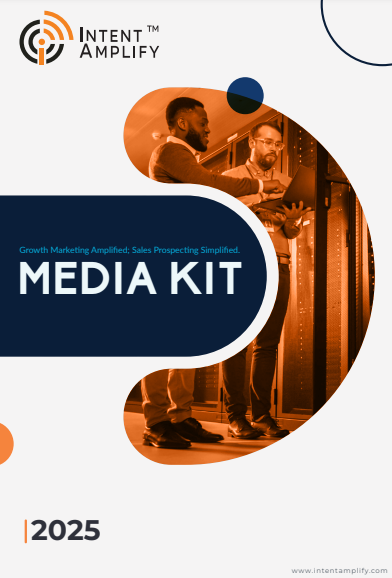
B2B Marketing Content That Drives Leads And Closes Sales
- Last updated on: August 10, 2022
The B2B marketing content game has changed.
The saying “content is king” has become an intrinsic part of marketing vernacular. It’s a press release I agree with, but that doesn’t mean just any content strategy will do. Not all monarchs are good rulers.
Similarly, not all content will facilitate achieving your organizational goals. Marketers must carefully craft, strategically distribute, and promote, and continually refine content because B2B marketing content drives leads and closes sales.
For most B2B organizations, the first purpose of marketing content is to pique interest in a company’s products and services, generate demand, and, ultimately, help drive sales. the subsequent five characteristics are vital to ensuring your content delivers on these desired outcomes.
Importance of Engagement
A good ruler is charismatic and capable of using words to influence the masses and motivate others to follow their lead. Good B2B marketing content should do the identical. Content You should engage readers (or viewers/listeners) during a conversation and invite them to join your organization’s movement.
Static product and solution overviews or one-sided company propaganda won’t inspire your audience. The key to attracting and interesting followers is having a clear understanding of their pain points, the power to articulate these challenges succinctly and impactfully, and a promise of how your B2B organization can help solve these problems.
Moreover, this effort should be viewed as an ongoing process instead of a one-and-done proposition. The goal should be to maneuver your audience from one piece of content to the next, driving an opportunity closer to a B2B sale at each step in the journey.
Content Visibility
A good king is all-seeing and all-knowing. they appear to be everywhere their subjects need them. Effective content should also possess omnipresent qualities. Accomplishing this needs variation in medium, format, and distribution channels.
Far too many B2B organizations churn out identical types of content over and over again. for instance, they’ll excel at producing articles and white papers but ignore multimedia such as videos and podcasts. Not everyone consumes content the identical way. A successful strategy will incorporate multiple content vehicles to appeal to different preferences.
Similarly, too many companies create compelling content only to isolate it within the confines of their own websites. For content to possess the desired impact, it must extend beyond corporate marketing channels to interact with prospects wherever they are, including social media and trusted trade publications. Your content shouldn’t be hard to seek out . It should instead find your audience.
Accessible Content Builds Buyer Trust
A good ruler is a person of the people. They relate to the challenges their subjects face and are available and accessible to assist them when needed. Good rulers don’t lock themselves in a cognitive state. a standard misconception is that gating (i.e., requiring people to fill out a form to access content) all or most B2B content is that the fastest way to generate B2B leads. This practice often has the other effect. Placing a barrier to entry on your B2B content can discourage engagement and chase away many would-be prospects.
With this in mind, the goal should be to form most of your content accessible to the masses, encouraging the maximum amount of readership as possible. Obviously, prospect contact information is going to be necessary at some point to constitute a lead. However, a corporation should first work to establish trust with its audience.
An honest rule of thumb is to position most of your content as non-gated “breadcrumb” pieces that B2B leads readers to select assets. A reader who has been liberal to engage with other pieces of content and has experienced the value they deliver is more inclined to provide contact information to access more information later in the process.
Additionally, B2B leads captured at this stage tend to be more qualified and hospitable nurturing.
Tailored Content Makes the Difference
A good king serves all subjects, not just the requirements of a select few. Similarly, B2B marketing content should address all phases of the buyer’s journey from awareness to evaluation and ultimately to decision/conversion. Many B2B organizations fall short in this area.
They weight an outsized percentage of content too heavily on the awareness and evaluation phases of the buyer’s journey. This content focuses on introducing a problem or pain point, outlining a possible solution, and accentuating the differentiators present in an organization’s products and services.
Few organizations put the maximum amount effort into creating content directed at helping prospects ultimately make a buying decision. This practice leads to a bunch of B2B leads being stuck at the top and middle of the sales funnel.
A good piece of decision-phase content will deliver proof points such as return on investment (ROI) metrics or address common objections. Self-evaluation checklists, proof of concept documents, ROI calculators, and customer testimonials are solid samples of content that can help close a deal. ensure your content strategy is balanced to include key decision pieces that complement awareness and evaluation assets.
Keep Refining
A good ruler learns from mistakes, constantly adapting to the changing demands of followers to reinforce service. Marketing content should be viewed in the same way. Content should never be considered complete. Its performance should be regularly monitored and measured, and its messages continuously refined to optimize audience appeal.
If a bit of B2B content doesn’t perform as expected, conduct the research necessary to work out the underlying cause. is that the topic a non-starter? Is the messaging off? Did you misjudge the medium or format?
Are you promoting the piece in the wrong places? Answers to these questions may not be readily apparent. Experimentation will often be required to isolate the matter and correct it. The key’s to engage in the process of constant improvement.
B2B Content likely won’t sell a replacement customer on its own. However, a solid content strategy that applies the characteristics outlined in this article can help lower the fruit for your sales team, providing the tools necessary to draw in, nurture, and convert leads.
When done correctly, your sales team and organization at large will view marketing content as an important contributor to business growth.
Let’s connect, optimize your strategy, and drive real results, because in today’s market, speed, personalization, and precision aren’t nice to have, they’re necessary.




